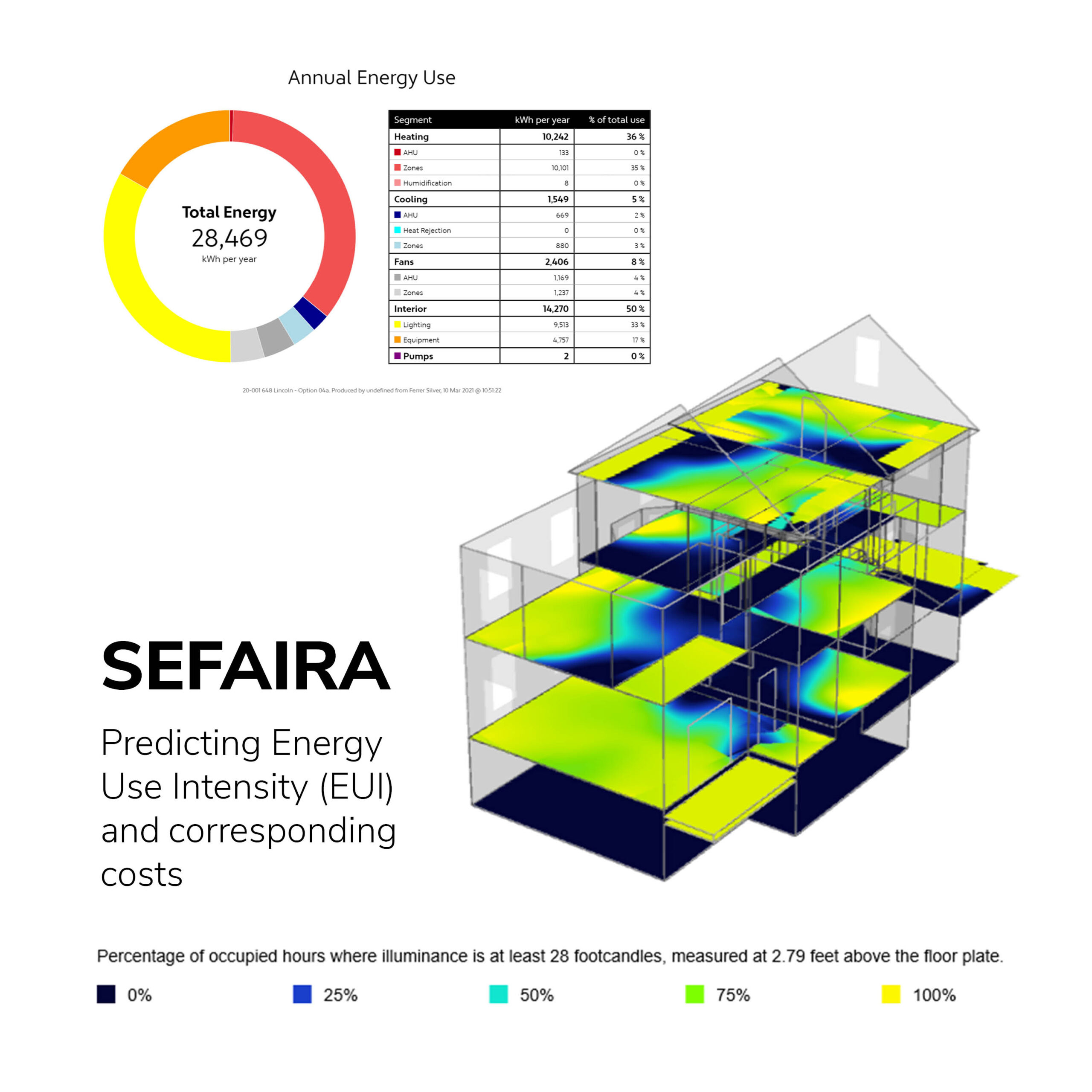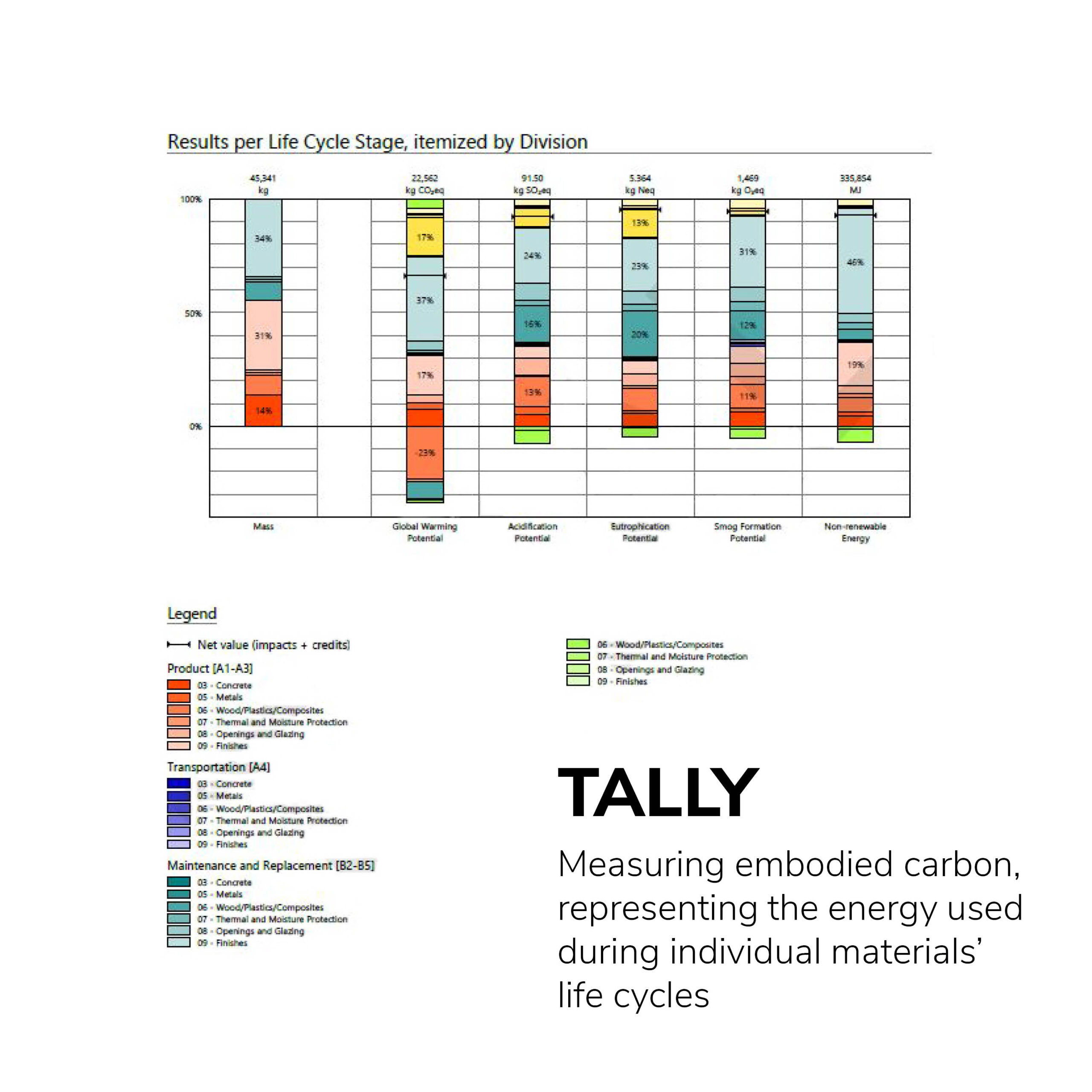Learning new software is always a hurdle, but prioritizing sustainability in building design is no longer optional.
TOOLS FOR QUANTIFYING SUSTAINABILITY
July 08, 2021
ENERGY USAGE AND CARBON ACCOUNTING
The urgency of the climate crisis demands rapid reduction of the environmental impact of buildings. To make sure we’re on track to meet our goals, we’ve spent the past year embracing new tools for data quantification in our designs. Historically, much of the focus in sustainable design has been on Energy Use Intensity (EUI), or how much power a building consumes and how efficiently that power is used. However, EUI is only part of the equation.
From a building’s initial concrete pour to its final finish nail, every material has been sourced, manufactured, and transported, each stage contributing carbon emissions of their own. The carbon impact of all the products and materials that go into a project is significant, but this “embodied carbon” can be difficult to quantify. New technology for measuring carbon impact and greater transparency within some sectors of the construction industry have made it easier to identify efficient design solutions that serve both our clients and the planet.
ENERGY USE INTENSITY (EUI) ASSESSMENT
Our team uses an analysis software called Sefaira to measure energy performance during the conceptual and schematic phases of all projects. Sefaira analyzes projected energy use and carbon emissions, thermal comfort, daylighting, and HVAC performance. This helps us compare different features and prioritize the most sustainable massing, products, and/or building envelope designs. Sefaira has the capability to run annual simulations on project performance and synthesize this data quickly and efficiently.
Utilizing this software at the beginning of a project informs efficient decisions early on and, can avoid costly design changes later. The tool is also an excellent visual communicator. Sefaira uses visually appealing graphs and charts to display this data in a straightforward manner that we’re able to share with our clients and consultants.

WHOLE-BUILDING LIFE CYCLE ANALYSIS (LCA)
Accounting for the carbon impacts of each material that exists in a building project is referred to as a Life Cycle Analysis. For this process we use a software program called Tally, originally developed by architects KieranTimberlake. Tally allows Placework to work within Revit (our Building Modelling Information software) to quantify the environmental impact of building materials. Tally’s output shows us an overall carbon emission value in pounds per square foot, useful when comparing one project to another. By completing this LCA analysis, we can identify and specify low-carbon or net-zero carbon products, from structural systems to floor coverings. These decisions, informed by the LCA, are an additional way to reduce the overall carbon footprint of a project.

AIA 2030 CHALLENGE
Placework is a signatory to the AIA 2030 Commitment, which challenges firms to make all new buildings, developments, and major renovations be carbon-neutral or better by 2030. Their online project tracking program aims to hold firms accountable and measure their progress towards carbon neutrality. It has been a great guide for us to see where we need to make strides in the next decade of work. We’re proud to be one of over 400 companies who have signed on to the Commitment. These quantifiable metrics help us share sustainable pathways with our clients, as well as keep track of our own carbon emissions as a firm.